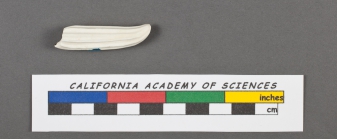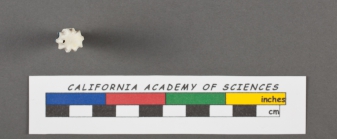Deep-Sea taxon details
Marginulina d'Orbigny, 1826
112221 (urn:lsid:marinespecies.org:taxname:112221)
accepted
Genus
- Species Marginulina obesa Cushman, 1923 (accepted > unreplaced junior homonym, Primary junior homonym of Marginulina obesa Terquem, 1866)
- Species Marginulina similis d'Orbigny, 1846
- Species Marginulina glabra d'Orbigny in Parker, Jones & Bady, 1865 accepted as Marginulina similis d'Orbigny, 1846
- Species Marginulina glabra d'Orbigny, 1826 accepted as Marginulina glabra d'Orbigny in Parker, Jones & Bady, 1865 accepted as Marginulina similis d'Orbigny, 1846 (Nomen nudum)
marine, brackish, fresh, terrestrial
Orbigny, A. D. d'. (1826). Tableau méthodique de la classe des Céphalopodes. <em>Annales des Sciences Naturelles.</em> vol. 7: 96-169, 245-314., available online at http://biodiversitylibrary.org/page/5753959
page(s): p. 258 [details]
page(s): p. 258 [details]
Hayward, B.W.; Le Coze, F.; Vachard, D.; Gross, O. (2025). World Foraminifera Database. Marginulina d'Orbigny, 1826. Accessed through: Glover, A.G.; Higgs, N.; Horton, T. (2025) World Register of Deep-Sea species (WoRDSS) at: https://marinespecies.org/deepsea/aphia.php?p=taxdetails&id=112221 on 2025-06-06
Glover, A.G.; Higgs, N.; Horton, T. (2025). World Register of Deep-Sea species (WoRDSS). Marginulina d'Orbigny, 1826. Accessed at: https://marinespecies.org/deepsea/aphia.php?p=taxdetails&id=112221 on 2025-06-06
Date
action
by
original description
Orbigny, A. D. d'. (1826). Tableau méthodique de la classe des Céphalopodes. <em>Annales des Sciences Naturelles.</em> vol. 7: 96-169, 245-314., available online at http://biodiversitylibrary.org/page/5753959
page(s): p. 258 [details]
basis of record Gross, O. (2001). Foraminifera, <B><I>in</I></B>: Costello, M.J. <i>et al.</i> (Ed.) (2001). <i>European register of marine species: a check-list of the marine species in Europe and a bibliography of guides to their identification. Collection Patrimoines Naturels,</i> 50: pp. 60-75 (look up in IMIS) [details]
additional source Loeblich, A. R.; Tappan, H. (1987). Foraminiferal Genera and their Classification. Van Nostrand Reinhold Company, New York. 970pp., available online at https://books.google.pt/books?id=n_BqCQAAQBAJ [details] Available for editors
page(s): p. 258 [details]
basis of record Gross, O. (2001). Foraminifera, <B><I>in</I></B>: Costello, M.J. <i>et al.</i> (Ed.) (2001). <i>European register of marine species: a check-list of the marine species in Europe and a bibliography of guides to their identification. Collection Patrimoines Naturels,</i> 50: pp. 60-75 (look up in IMIS) [details]
additional source Loeblich, A. R.; Tappan, H. (1987). Foraminiferal Genera and their Classification. Van Nostrand Reinhold Company, New York. 970pp., available online at https://books.google.pt/books?id=n_BqCQAAQBAJ [details] Available for editors
 Present
Present  Inaccurate
Inaccurate  Introduced: alien
Introduced: alien  Containing type locality
Containing type locality
From editor or global species database
Diagnosis Test elongate, circular in section, early stage slightly curved but not completely enrolled, later chambers rectilinear, sutures straight to oblique; wall calcareous, hyaline, perforate radial, surface with prominent longitudinal costae, may have an apiculate base; aperture radiate, terminal, at the dorsal angle and may be produced on a neck. L. Jurassic (Pliensbachian) to Holocene; cosmopolitan. (Loeblich & Tappan, 1987, Foraminiferal Genera and Their Classification) [details]Unreviewed
Habitat Known from seamounts and knolls [details]





